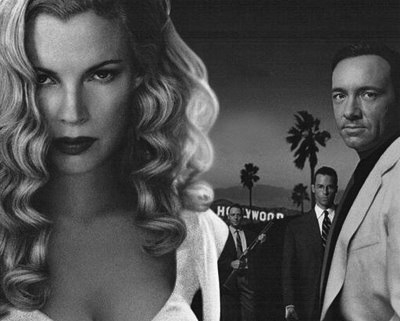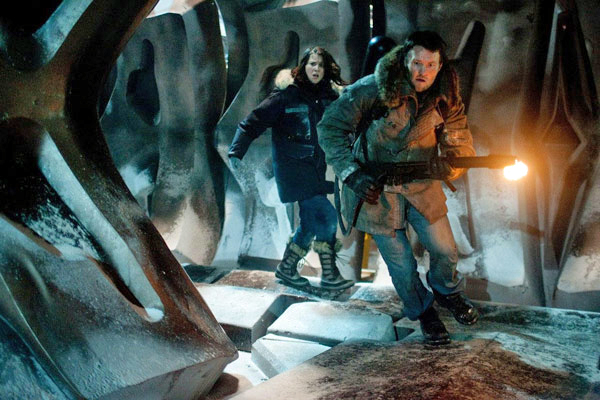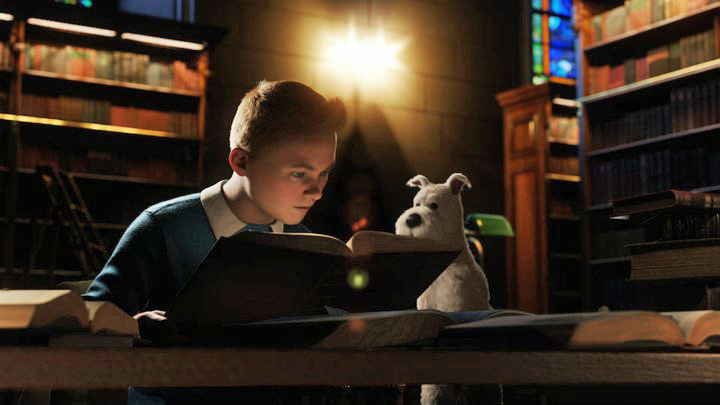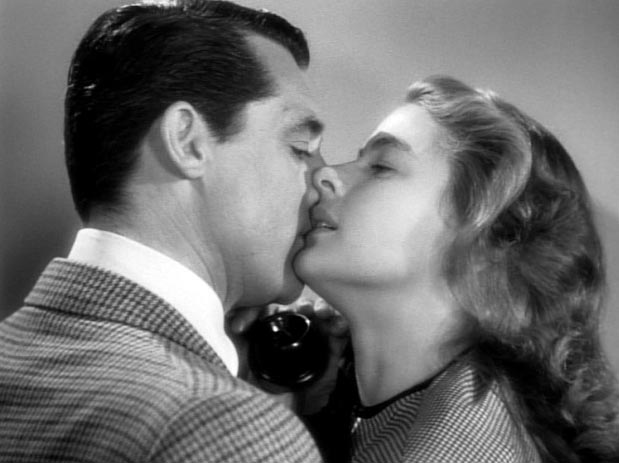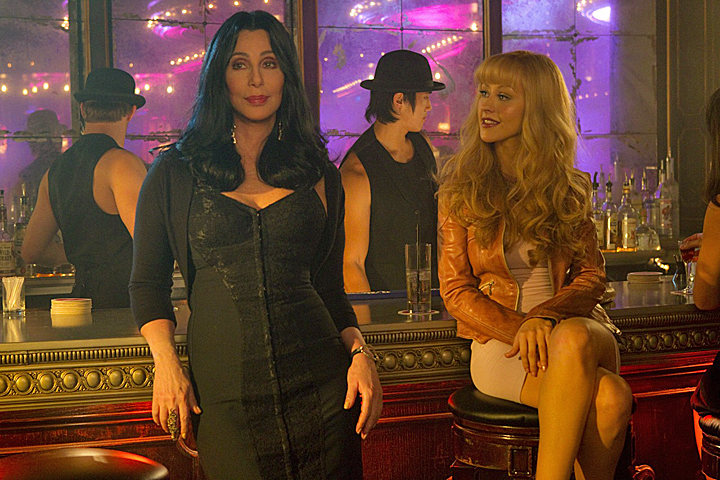Q. Just read your lousy review of the wonderful movie “Battle: Los Angeles” and the first thing that came to my mind was jawbone of an ass. Fits you perfectly. Grow up! (Anonymous)
A. What was the second thing that came into your mind?
Q. I agree with you about how pointless and annoying 3D is. I was happy to learn in your review that “Rango” was not in 3D, and that alone was enough to make me go see it, my first animated movie in a few years.
But the relationship between “Rango” and 3D is more interesting and complicated than it first appears. As you watch the movie, clearly “Rango” was intended to be in 3D. The characters are constantly thrusting their faces and their implements into the camera. The real question is, why then did the studio decide NOT to release it in 3D? (Gregory Berry)
A. Of course you can have 3D-like shots without the process. On Isla Fisher’s web site I found this quote by director Gore Verbinski: “I don’t think there’s a dimension missing. I don’t watch it and go, you know, ‘It’s flat,’ or it’s, you know, missing anything. So you know, we talked about it early on and it just didn’t seem like we needed to go there.”
Q. My wife and I made the mistake of taking our 7-year old daughter to see “Rango.” I think it should have had a PG-13 rating for the over-the-top sexual innuendos pervasive throughout the movie. The very comparison you made to “Blazing Saddles” would qualify this movie being inappropriate for my daughter. I found “Blazing Saddles” to be funny, though. I guess the difference between G and PG is the adult humor. I guess the smart comment indicates whether you get it or not. Well, in this case not only did we get it, but were saturated with it and finally decided to leave because our annoyance with it. I agree with Bruce Miller of the Sioux City Journal that it is not a movie for the whole family. (Andrew Reading, Pittsburgh, PA)
A. It’s a film adults enjoy more than kids. I mentioned that in the review. I believe the sexual innuendos probably went over the heads of many children. Lots of animated films sneak in winks for the grown-ups. It all depends on how much are you afraid your daughter picked up on. The “Blazing Saddles” farts seemed to be much appreciated by kids, and didn’t offend me.
Q. I’m a 15-year-old who has been reading your Great Movies series for a few years now, but have never had many of the classics at my disposal. However, my family recently got Netflix, and I must say I’m overwhelmed by everything available. Where should I begin? And, if I’m trying to foster an appreciation for classic film in my family, where should they start? Are there any particular directors or titles you would recommend? (Zachary Trail)
A. I could name specific films or directors, but I’d rather encourage you to turn on Netflix, go to Watch Instantly, choose “Bonnie and Clyde” (1967), “Laura,” “Great Expectations” (1946) and “The Third Man.” Then what happens is, you find a director you like and start rummaging around in his work. As to fostering the appreciation of your family for classic films–well, good luck. When it comes to taste, many people are foster-proof. One nice thing about Netflix is, if you’ve given a film a good chance and it’s still not working for you, you don’t need to feel bad when you stop watching.
Q. You were critical of e-books a while back. Here’s one point in their favor — ever since I was gifted a Kindle a month ago I’ve read 8-10 books (including one of yours), and probably hadn’t read that many the entire previous year. Just having so many different books accessible all the time has made the difference. I still read the paper kind, too, but they take longer (they sit on the nightstand). (Mary Burns, San Mateo)
A. Reading is an admirable thing to do no matter how you do it. I remain in love with the tactile pleasures of physical books. I’ve read in a Kindle, and on my iPad, but it’s a little like walking on a treadmill: You keep up the pace but don’t seem to be getting anywhere.
Q. After the death of Elizabeth Taylor, I read your review of “Reflections in a Golden Eye” again, and noted your comment on the washed-out color palette. It’s been years, but I remember John Huston saying in his autobiography An Open Book that Aldo Tonti shot the film through a golden filter, the idea being to really give it that golden haze implied by the title. I’ve never found it on video with the original golden/sepia tone print, but John said it looked better, and who am I to argue? (Michael Harper)
A. I saw the movie in first run as Huston intended. It wasn’t quite in b&w; you could see faint greens, golds, reds and blues. That was unsuccessful at the box office. Audiences saw it as a mistake and not an artistic decision. Since the film was photographed in full color and the “fading” was done in post-production, most of the video versions have simply restored the color. That’s not what Huston intended, and the thing to do is to use your color adjustment to fade the color to almost but not quite b&w. Does it work? That’s for you to decide.
Q. I had a facepalm moment tonight and I need commiseration. I loaned my friend and his wife “L.A. Confidential” on Blu-ray a week ago. He returned it tonight and said his wife didn’t want to watch it because it was an “old movie.” Now, I don’t know whether or not that means she didn’t like the idea that it took place several decades ago, or that 1997 is “old,” but either way I wanted to yell at her. The kicker? They watched “Dance Flick” instead. (Joseph O’Driscoll, Salt Lake City)
A. He should have said, “Old? How can it be old? It’s in color!”
Q. Once you and Gene Siskel did a show on black & white films, and how they should’ve been preserved back then and forever. You argued the value of the significance of B&W as an added layer that movies can only gain from it.
What I would like to ask is, what is your opinion of color films, all of which are created with color in mind, being changed into B&W? Would, for instance, big musicals like “Wizard of Oz” or big epics like Gone with the Wind and even contemporary films like “Reservoir Dogs, “Forrest Gump,” “Being John Malkovich, or even the Batman films have benefited from that treatment? Would B&W really add something new or interesting in the process? Or should color films not be tampered with? (Alexander Chatzipantelis)
A. The film should be seen as it was originally made. This includes many b&w films of the silent era where some of the scenes were tinted. Of course you can easily watch a color film in b&w simply by adjusting a television, and I did that once as an experiment with “L.A. Confidential,” a film whose noir qualities have me the notion. It actually looked quite good. I’ve only tried that two other times, however, with color films whose videos were made from badly-faced prints that had turned pink. Then b&w was just making the best of a bad thing.

